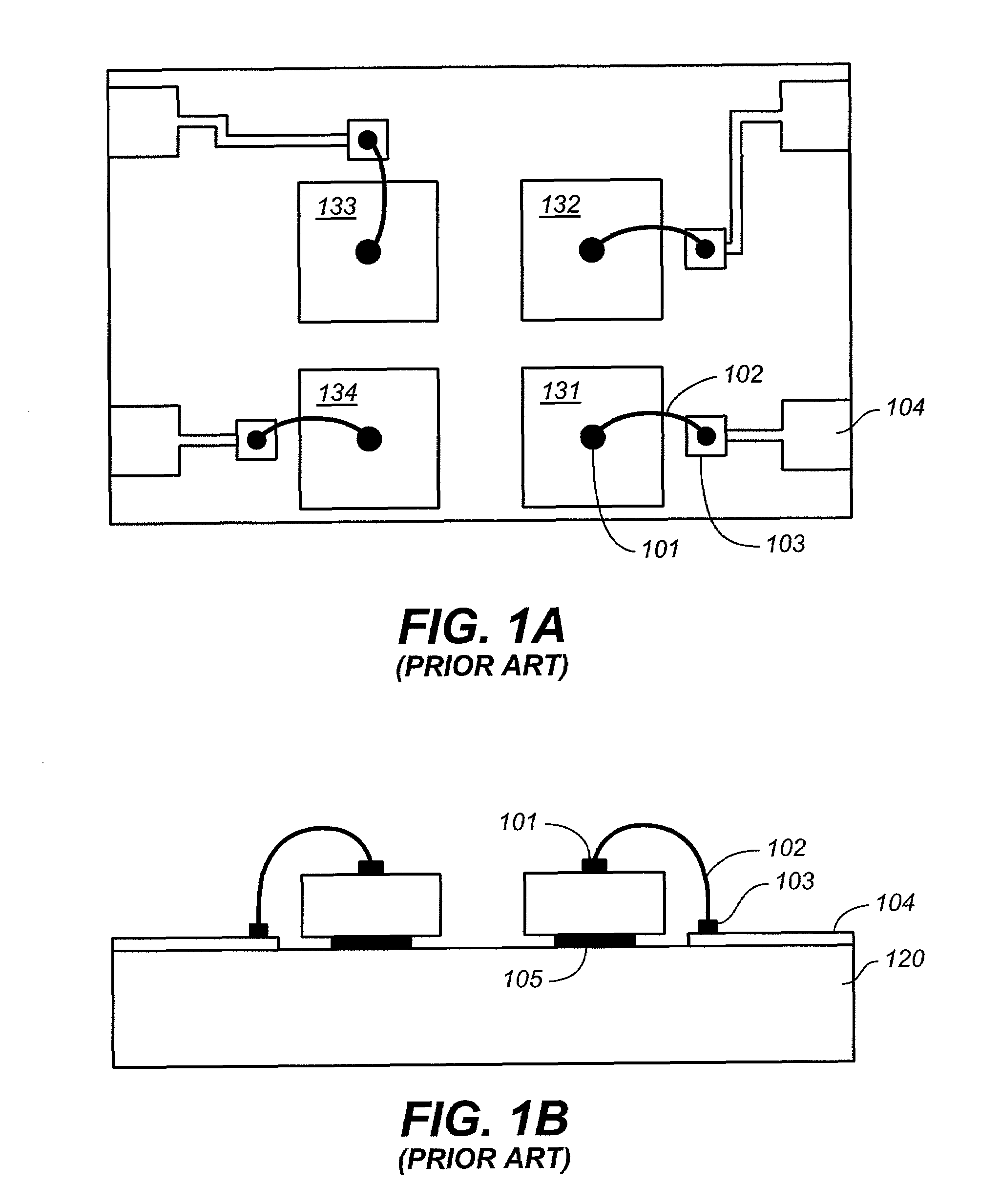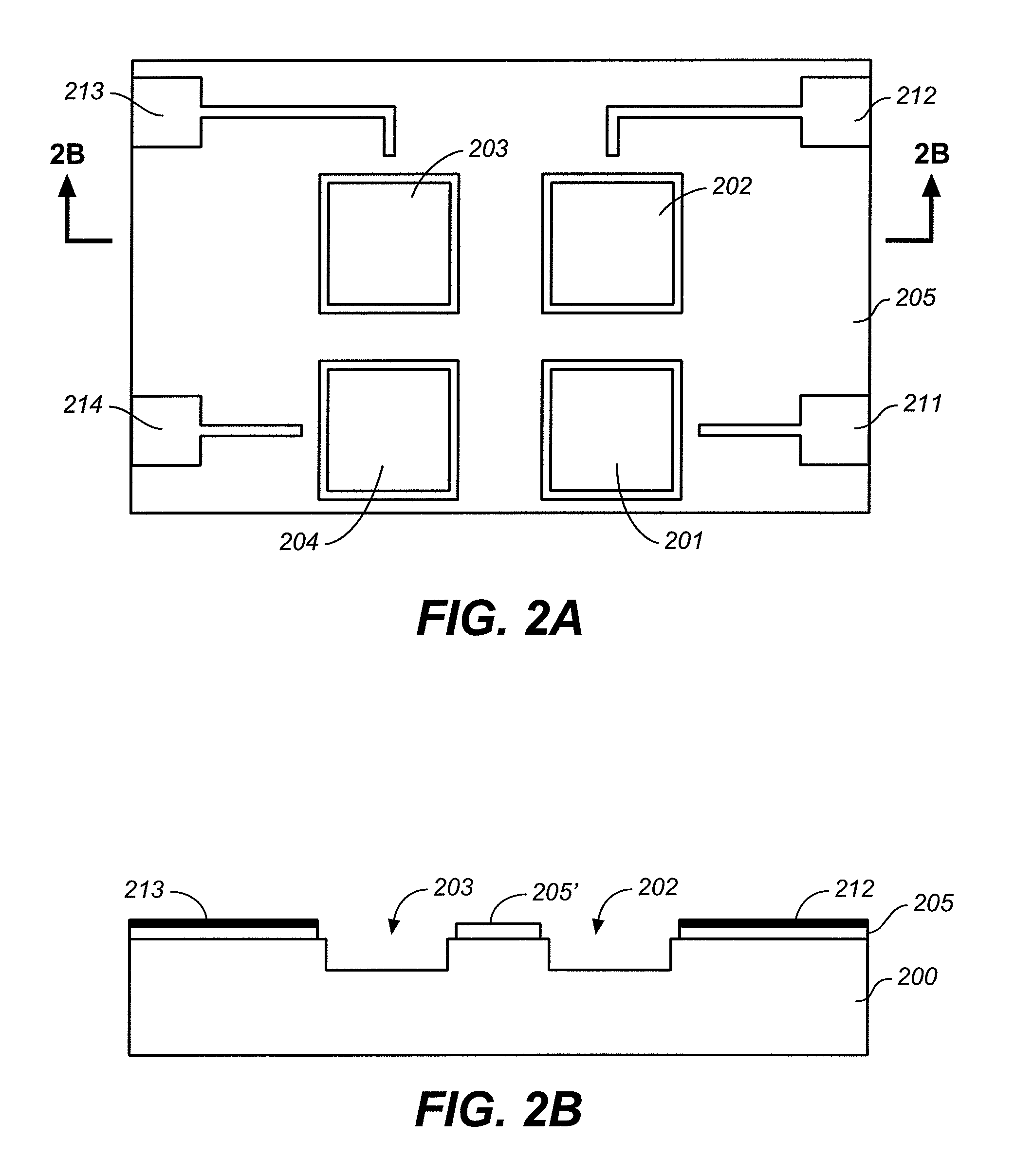LED chip array module
a chip array module and chip technology, applied in the direction of electrical equipment, semiconductor devices, semiconductor/solid-state device details, etc., can solve the problems of poor reliability, difficult interconnection between chips, and low lumen output per device, so as to achieve easy wiring and reliable electrical connections.
- Summary
- Abstract
- Description
- Claims
- Application Information
AI Technical Summary
Benefits of technology
Problems solved by technology
Method used
Image
Examples
Embodiment Construction
[0038]Since their inception in the early 1960's, light emitting diodes have gained widespread use and now can be found nearly everywhere. The devices are fabricated by depositing a stack of epitaxial layers onto a substrate. Normally the deposition starts from electron-excessive layers called n-doped layers, then Multiple Quantum Wells (MQWs) and at last the p-doped layers having holes. When a potential is applied across the device, the electrons and holes move in the opposite directions and combine in the MQWs. This causes light to be emitted with a wavelength and color determined by the energy released when the electrons and holes combine.
[0039]FIGS. 10A and 10C illustrate conventional LED dies (or chips) for GaAs-based (color ranging from red to yellow) and GaN-based (color ranging from green to blue) LED devices, respectively. Epitaxial layers are grown onto a wafer of GaAs, SiC or sapphire. GaAs or SiC are electrically conductive and therefore their arrangement of electrode is ...
PUM
 Login to View More
Login to View More Abstract
Description
Claims
Application Information
 Login to View More
Login to View More - R&D
- Intellectual Property
- Life Sciences
- Materials
- Tech Scout
- Unparalleled Data Quality
- Higher Quality Content
- 60% Fewer Hallucinations
Browse by: Latest US Patents, China's latest patents, Technical Efficacy Thesaurus, Application Domain, Technology Topic, Popular Technical Reports.
© 2025 PatSnap. All rights reserved.Legal|Privacy policy|Modern Slavery Act Transparency Statement|Sitemap|About US| Contact US: help@patsnap.com



